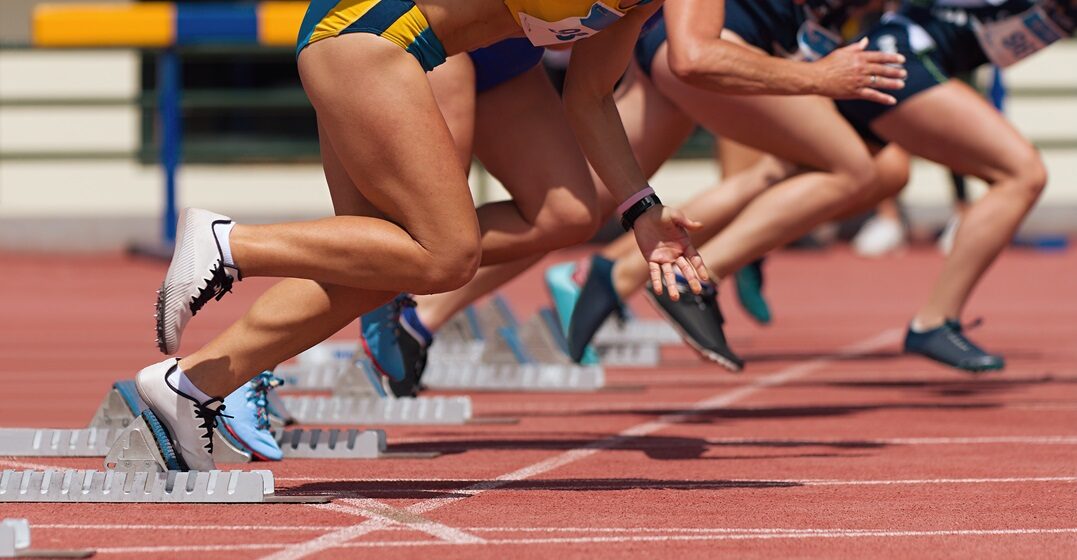Published on May 16, 2024

12 great Spanish-speaking athletes you should know about

You may already be familiar with Spanish-speaking athletes like tennis phenom Rafael Nadal and Argentinian soccer legend Diego Maradona. But have you heard of ultramarathon runner Lorena Ramírez?
Spanish-speaking athletes, particularly those from Latin America, rank among the greatest performers in modern sports. Their standing in the ancient world was also impressive. The Mesoamerican Maya and Mexica cultures practiced a sacred ball game called pitz or tlachtli, which some historians consider the spiritual predecessor to the wildly popular sport of fútbol (soccer).
Today, sports are a major part of daily life across Latin America. From soccer to mountain climbing, here are some of the greatest Spanish-speaking athletes you may not have heard about — until today.
International football, also known as soccer or simply el fút, is Latin America’s most popular sport. From Mexico to the tip of Chile, there is a long history of stellar athletes from Spanish-speaking countries. Mexico alone reports an estimated 250 million Spanish-speaking athletes that play football regularly at the professional and amateur levels.
Alicia Vargas was so good they called her “La Pelé,” after the talented male footballer from Brazil. She was the top scorer in the first-ever Women’s World Cup in 1970, netting an astounding five goals. You can learn about how Vargas and her teammates forged a path in international women’s soccer by watching the English-language movie Copa 71 or the Spanish-language documentary Tan Cerca de las Nubes (So Close to the Clouds), both released in 2024.
Tiane Endler is the only Chilean footballer — man or woman — who has ever won both the Champions League and the Copa America (America’s Cup). She is the fourth-ever Chilean to be nominated for the Ballon d’Or and was the only South American nominated in 2022. She is currently the portera (goalkeeper) for Olympique Lyonnais in France.
Lorena Ramírez is a corredora ultramaratón (ultramarathon runner). She is a member of the Rarámuri indigenous community from the North of Mexico. The Rarámuri are known as some of the best ultramarathon runners in the world, and Ramírez is no exception. She competes in Mexico and Europe, famously running in a traditional dress and huaraches (leather sandals).
Yulimar Rojas won the Gold medal in salto triple (triple jump) at the 2020 Tokyo Olympics. The Venezuelan is a four-time world champion and holds the current world record at 15.74 meters. Her jump measures longer than the length of a semi-truck!
This Venezuelan athlete won the gold medal at the 2020 Paralympic Games for the planos de 100 metros (100 meter dash). She competed in the T11 category for runners with a near-total visual impairment. Pérez crossed the line in 12:05 — less than two seconds behind the world record set by Florence Griffith Joyner in 1988.
In cycling, one of the most famous Hispanic athletes from Colombia is Rigoberto Urán. He won the silver medal in ciclismo de ruta (road cycling) at the 2012 Olympics and has stage wins in the Grand Tours of cycling. He currently rides for EF Education-Easy Post cycling team in Europe.
We can’t talk about famous Hispanic athletes and not mention Fernando Valenzuela. As a lanzador (pitcher) for the Los Angeles Dodgers, Valenzuela remains a cultural icon for Mexicans and Mexican-Americans. The “Fernandomania” that gripped the United States in the 1980s catapulted Los Dodgers to their modern-day status as one of the most popular sports teams among Latinos in the United States.
Over 30% of professional baseball players in the MLB are Latino, yet only 5% of baseball players in the Hall of Fame are Latino. The first to be inducted was Puerto Rican and jardinero derecho (right fielder) for the Pittsburgh Pirates, Roberto Clemente. He is among the most famous Hispanic sports players of all time, winning a Gold Glove for 12 consecutive years from 1961 to 1972.
Julia Quispe Tincuta is an alpinista (alpine mountain climber) from Bolivia. She and other cholita women from the Aymara indigenous community have often worked as porters and support for other climbers.
Quispe Tincuta has stepped to the forefront and conquered South America’s tallest peaks, including Aconcagua (6,960 meters) and Ojos del Salado (6,893 meters). Next, she’s looking to conquer Everest in her traditional dress. Like Lorena Ramírez, she is a role model for Spanish-speaking athletes from indigenous communities who want to honor their cultural dress while they train.
María Isabel Urrutia is a Colombian weightlifter and the first-ever Colombian to win an Olympic gold medal in any sport. She won for levantemiento de pesas or halterofilia (weightlifting) in the 69–75 kilogram category in the 2000 Sydney Olympics.
Whether lucha libre (entertainment wrestling) is real or not, it still takes an incredible amount of athleticism to pull off the high-flying dramatic moves. There is no more famous luchador (wrestler) than El Santo (The Saint). From his debut in 1935 until his retirement in the late 1950s, El Santo dominated the ring and the silver screen. Check out our podcast episode about lucha libre to experience the thrill of fight night yourself.
Jackeline Rentería is the real deal. The Colombian is a two-time Olympic gold medalist in lucha (Olympic wrestling). She won the bronze medal in both the 2008 and 2012 Olympics.
Now you know some incredible Spanish-speaking athletes you may have overlooked before. Often, due to a lack of funding or cultural restrictions, Spanish-speaking athletes must overcome tremendous barriers to access the international sports stage. But we love hearing their stories when they do. After all, sports are most beautiful when everyone can play.